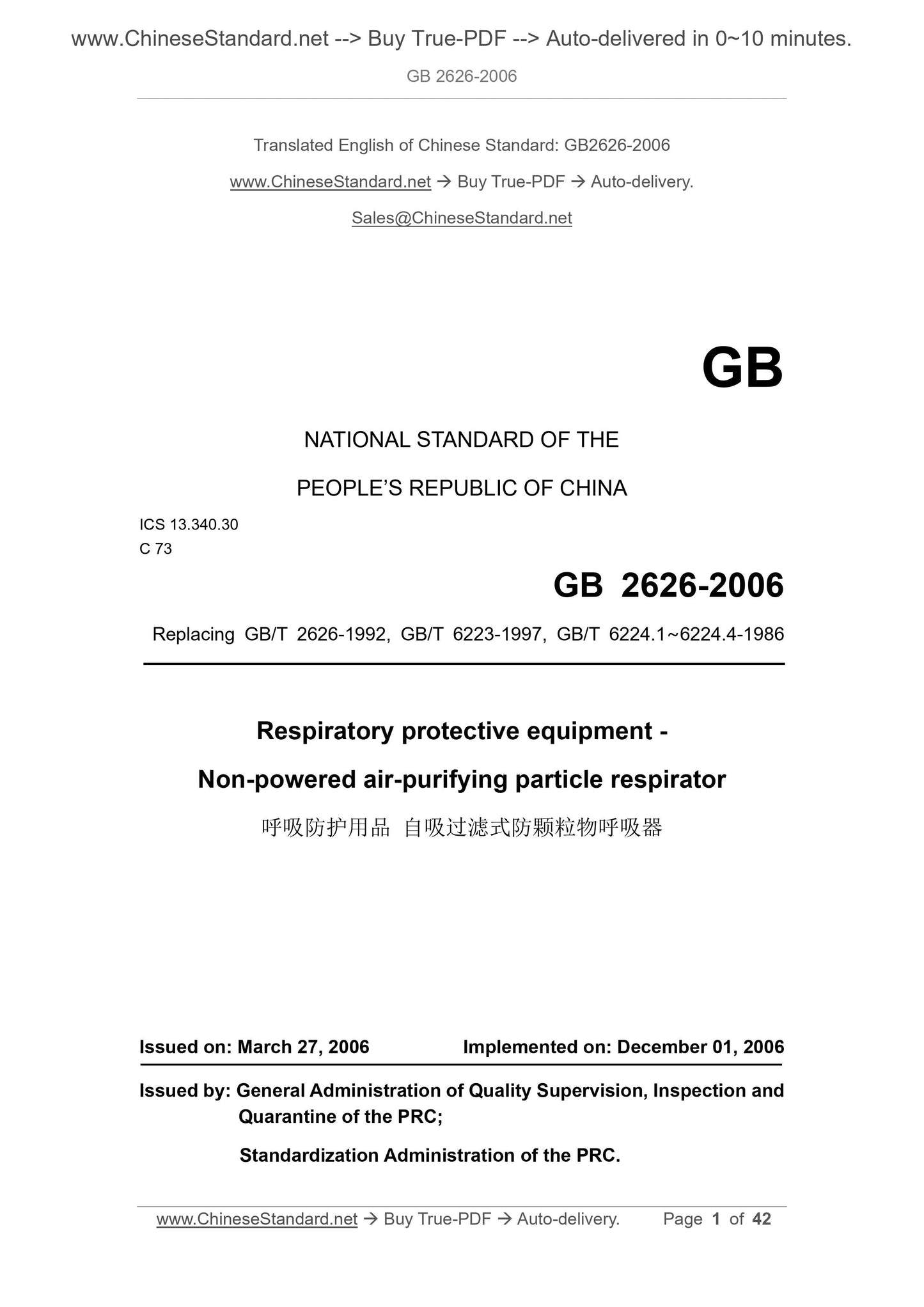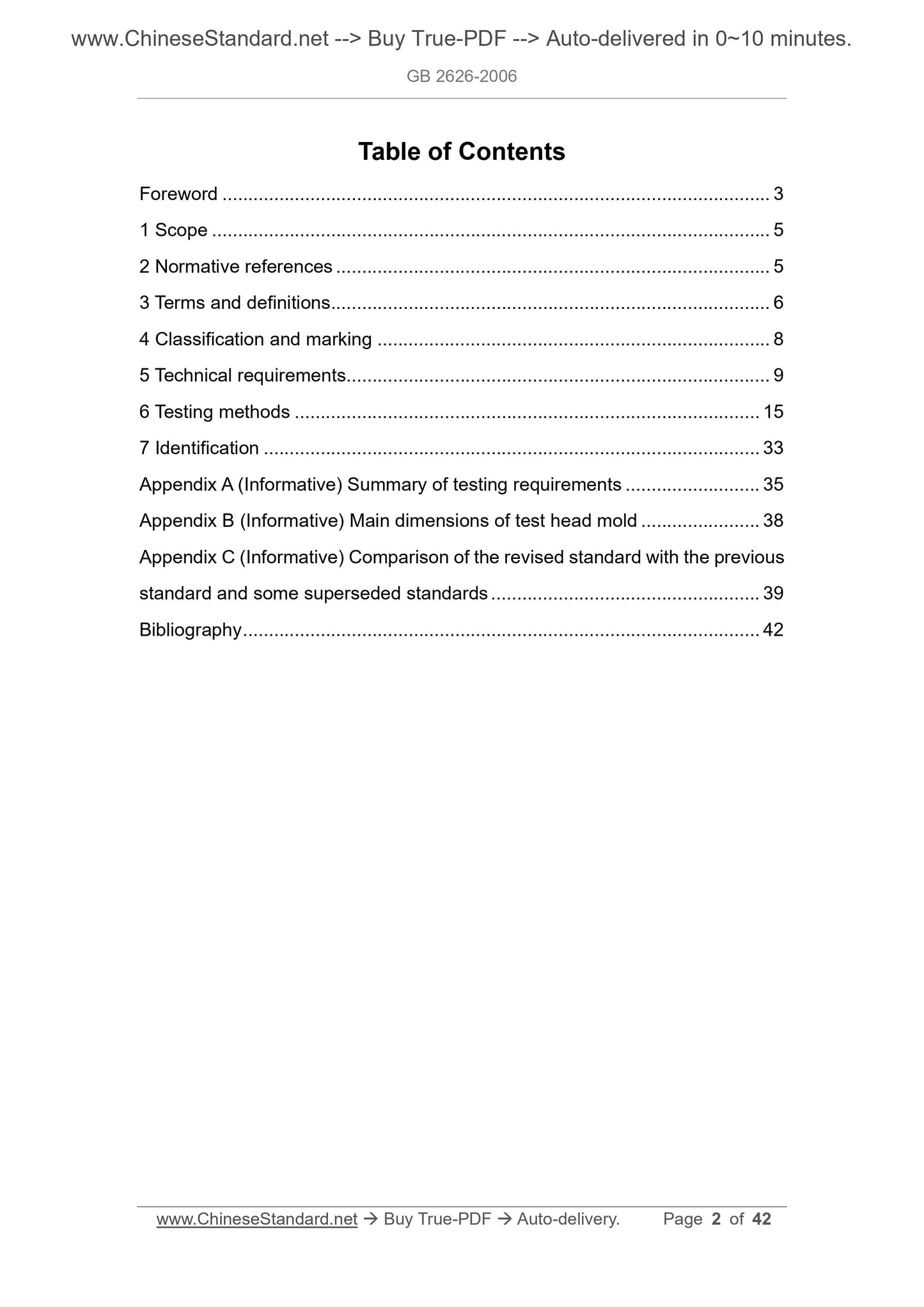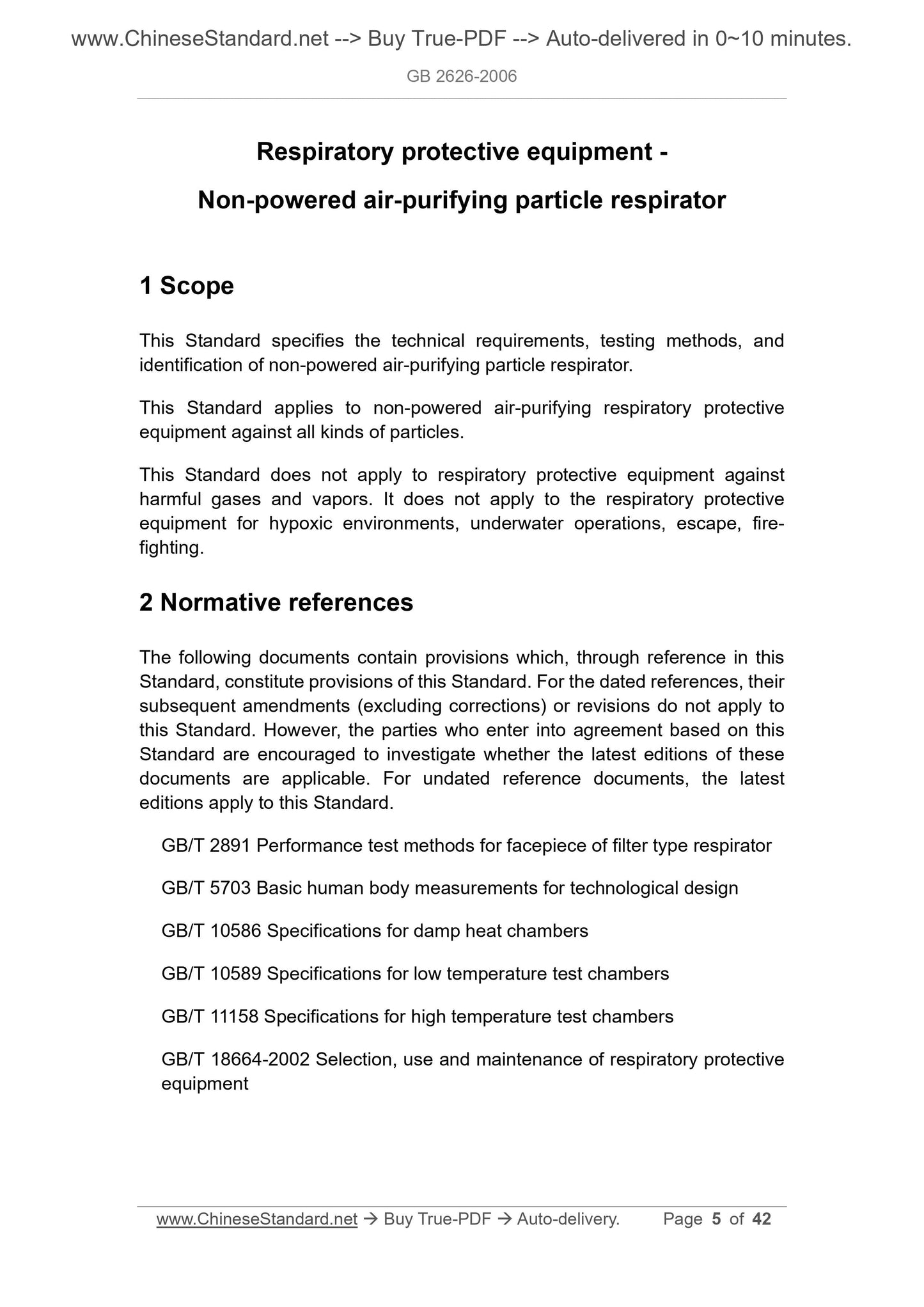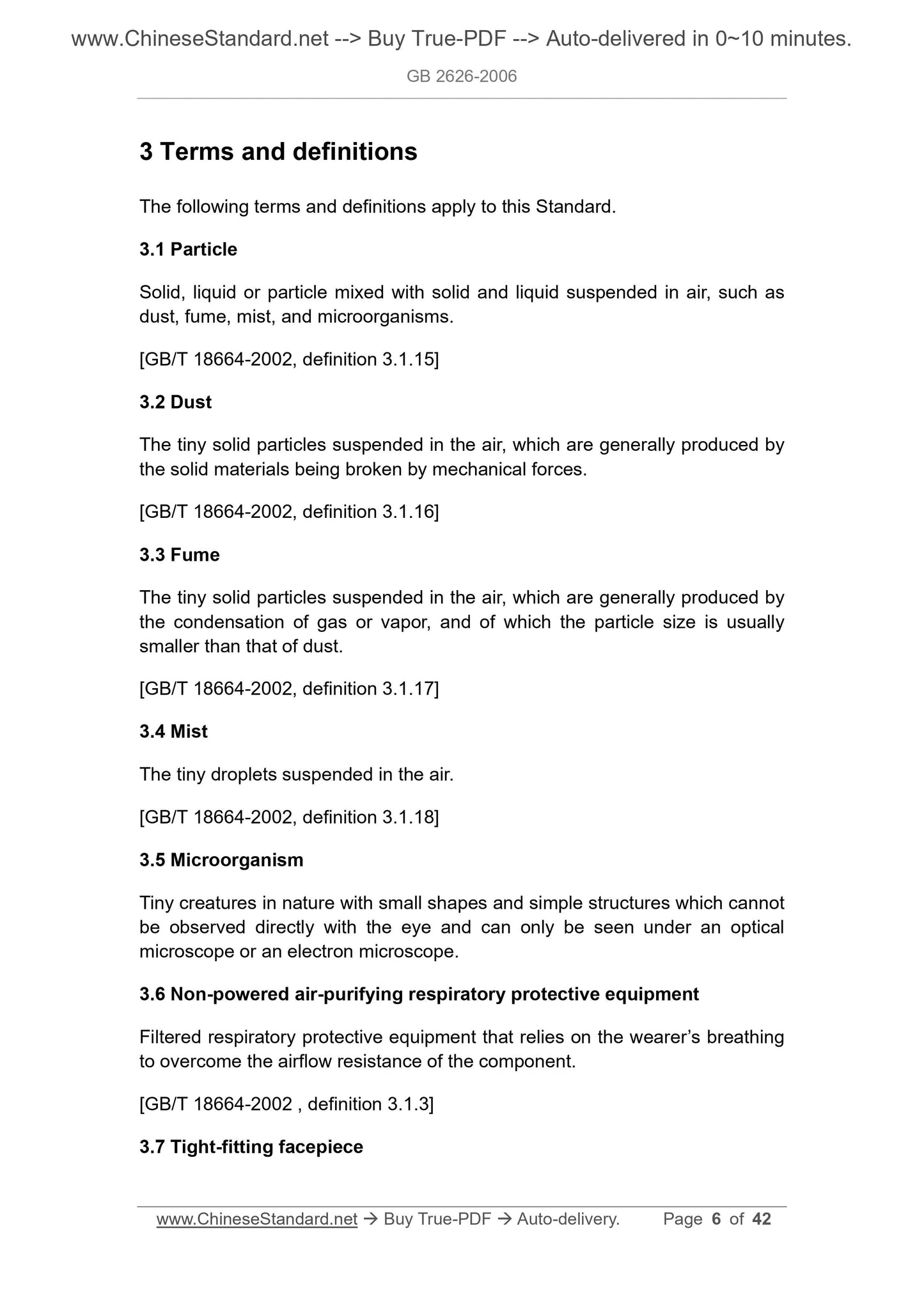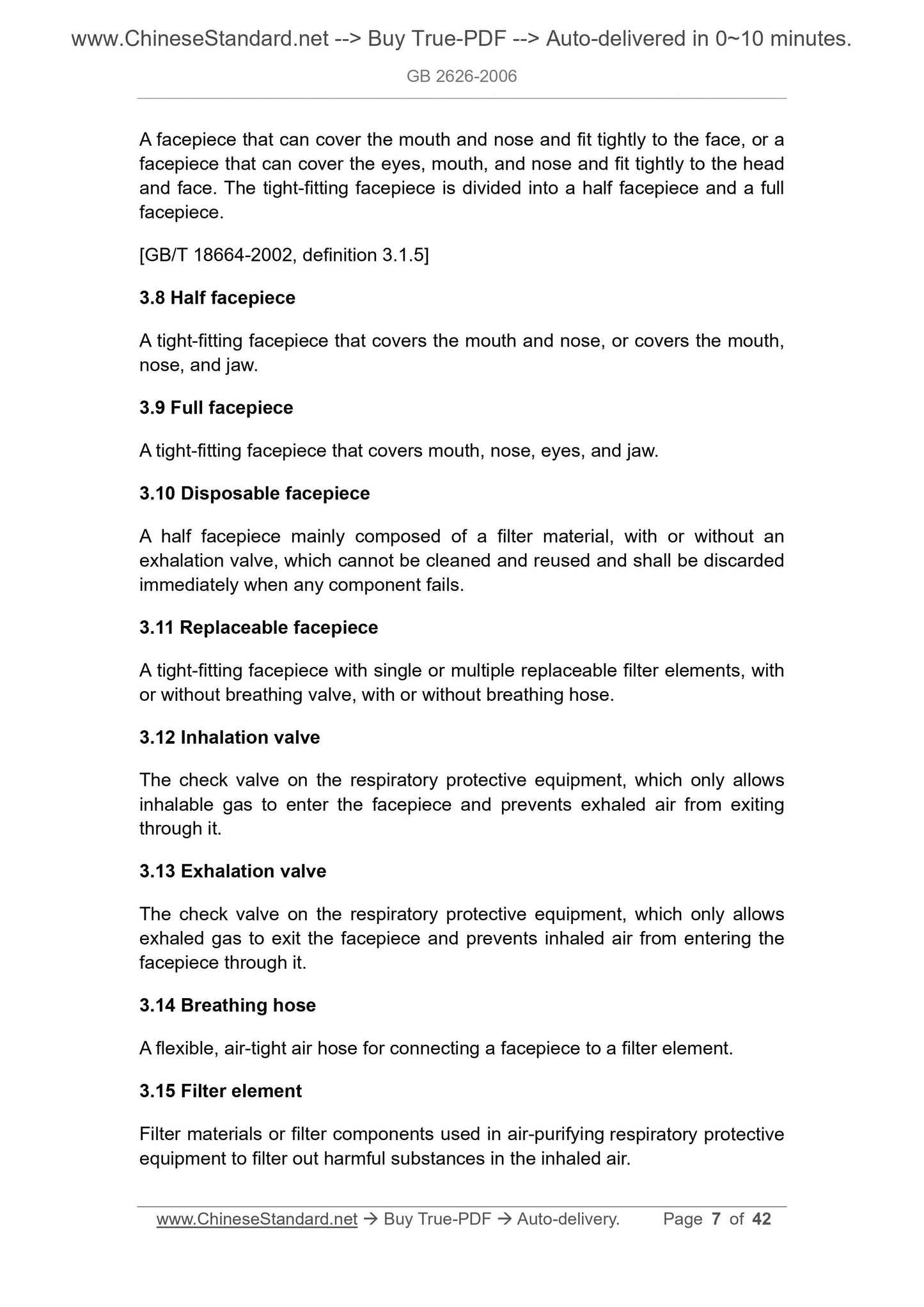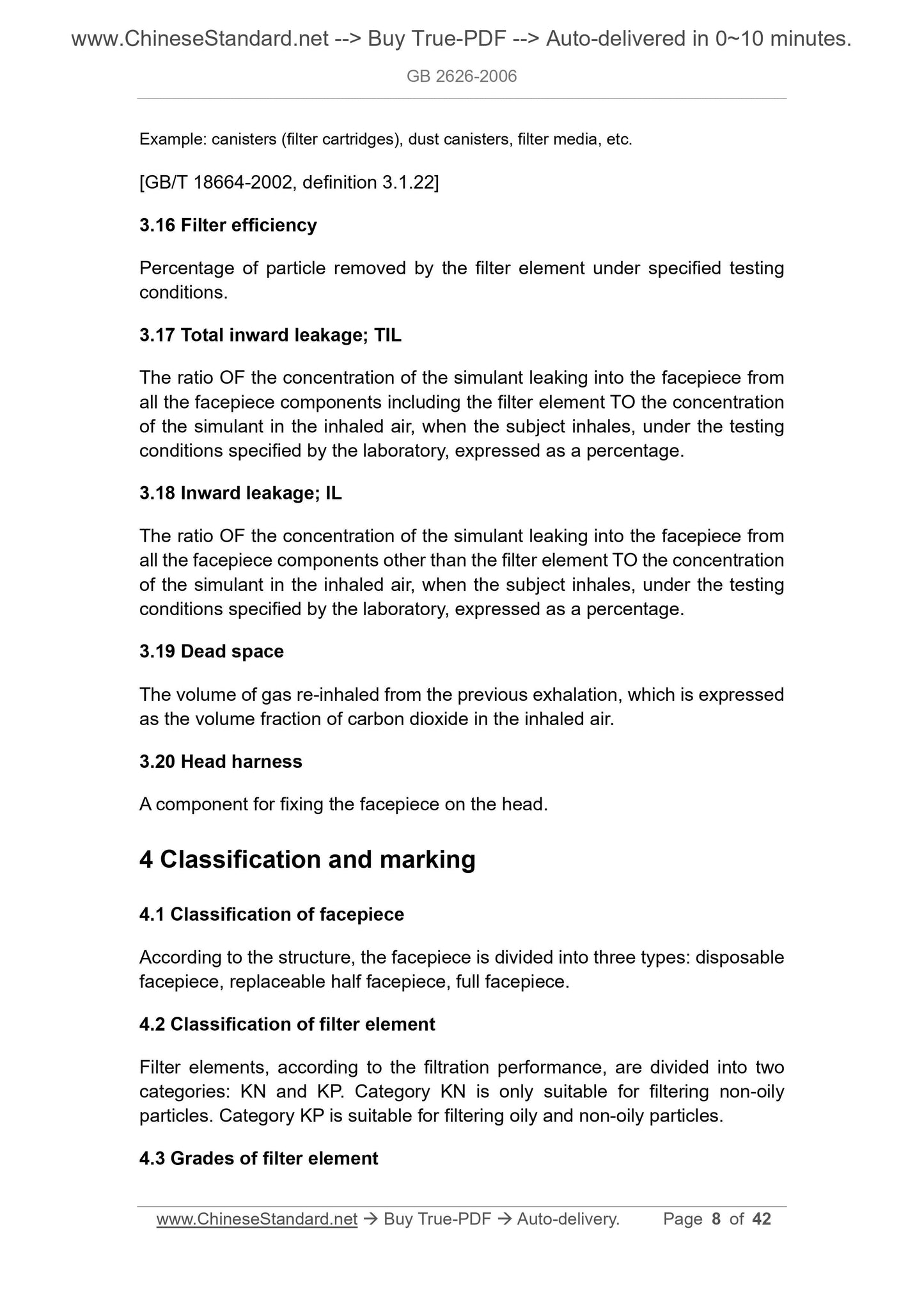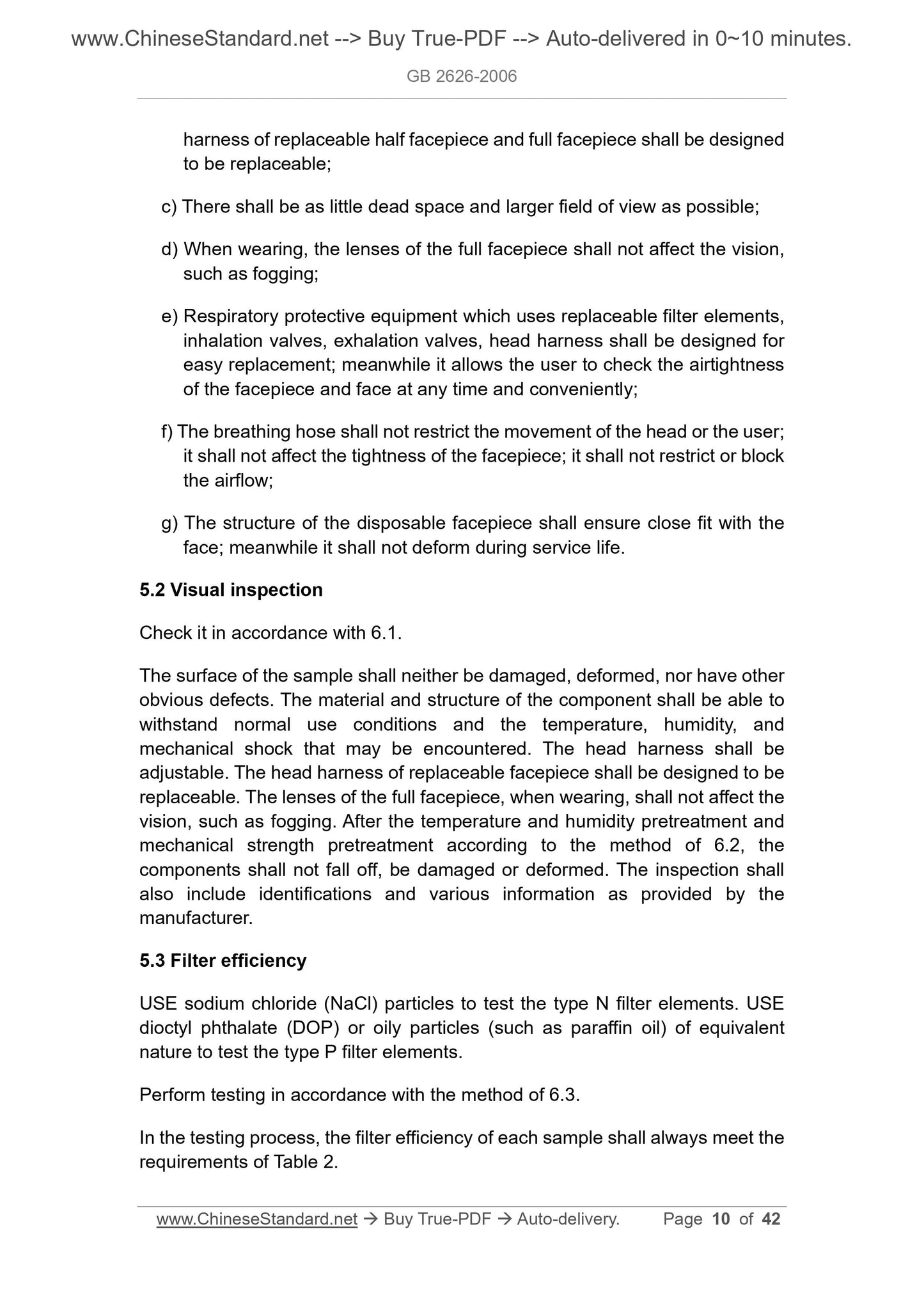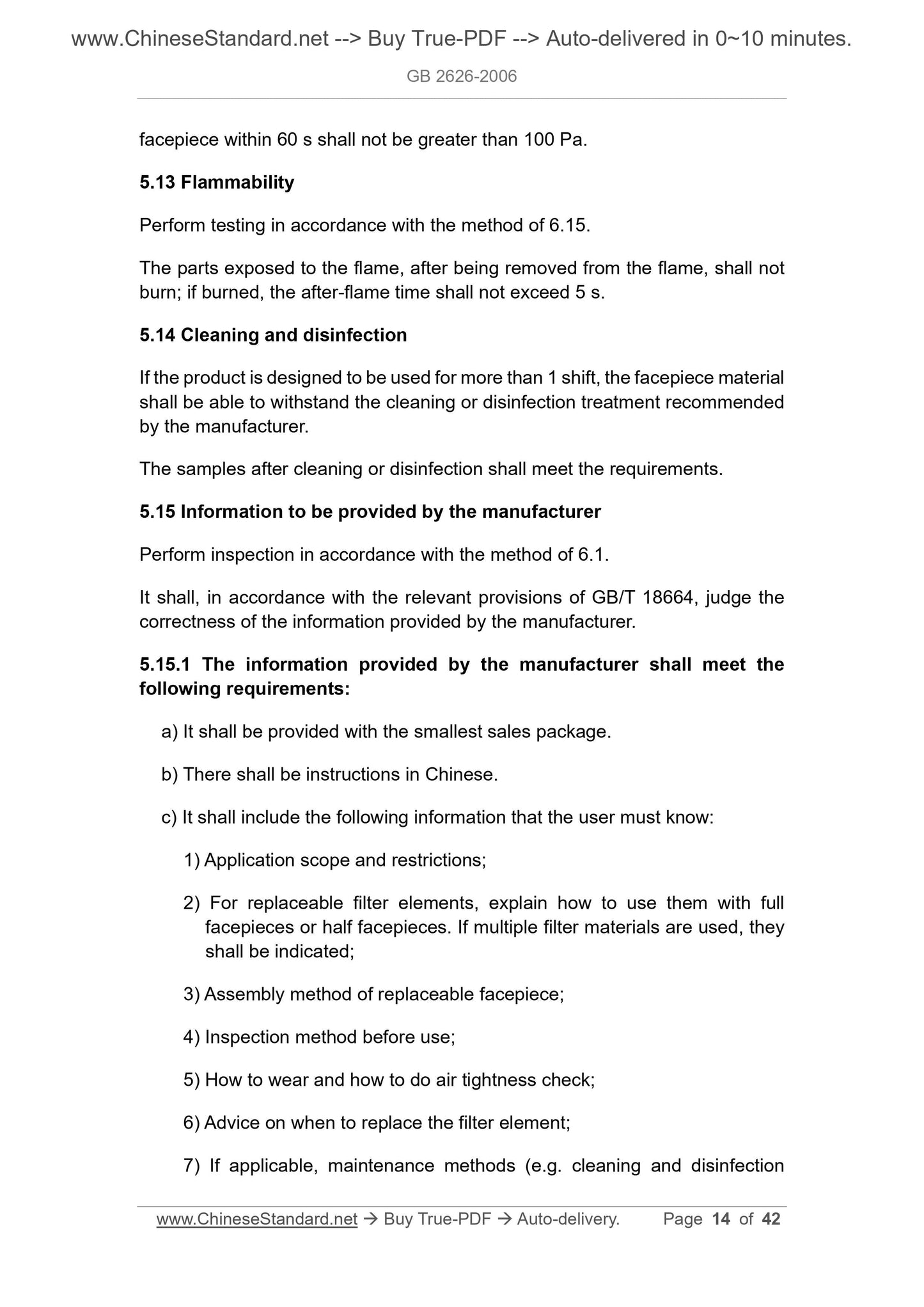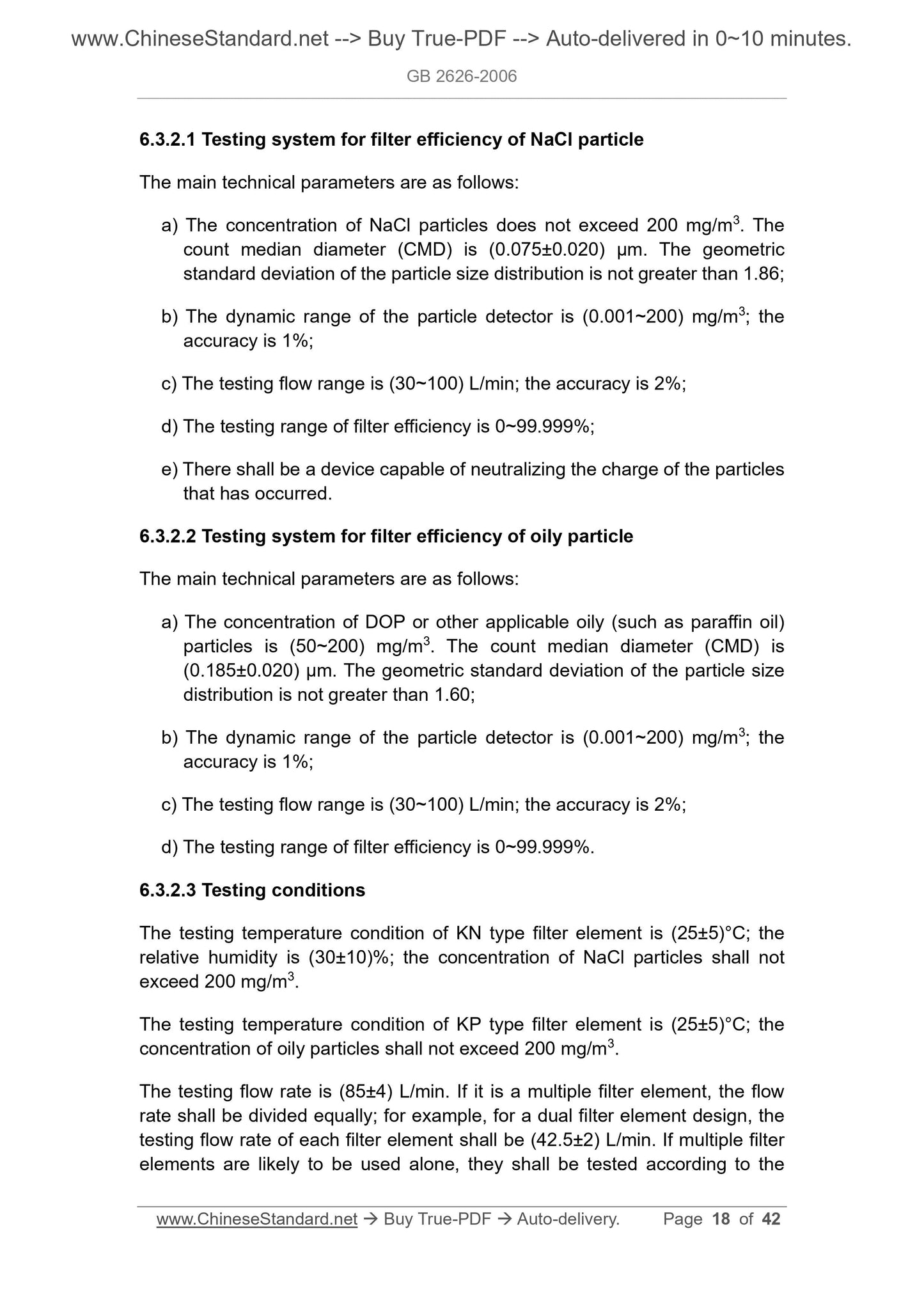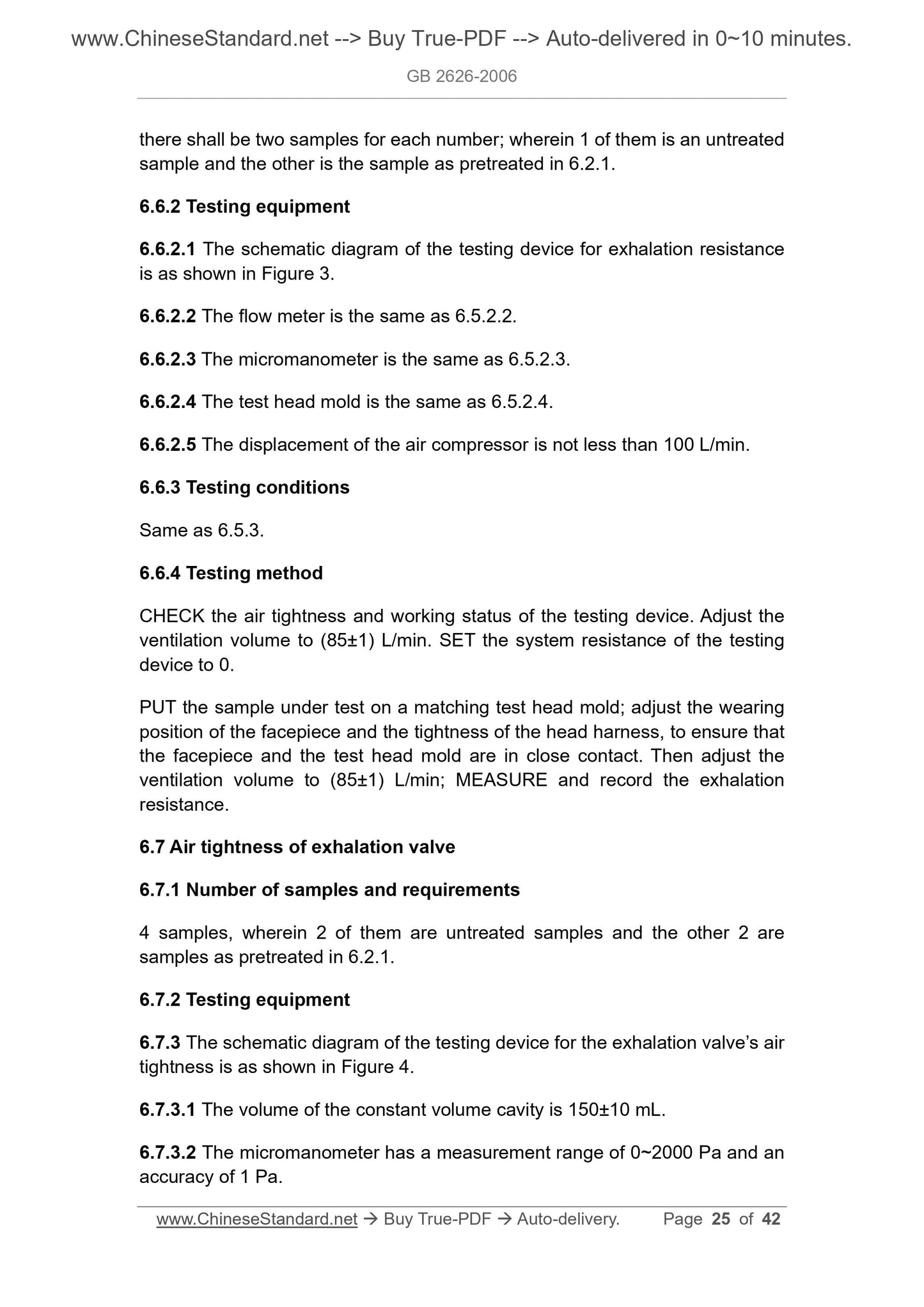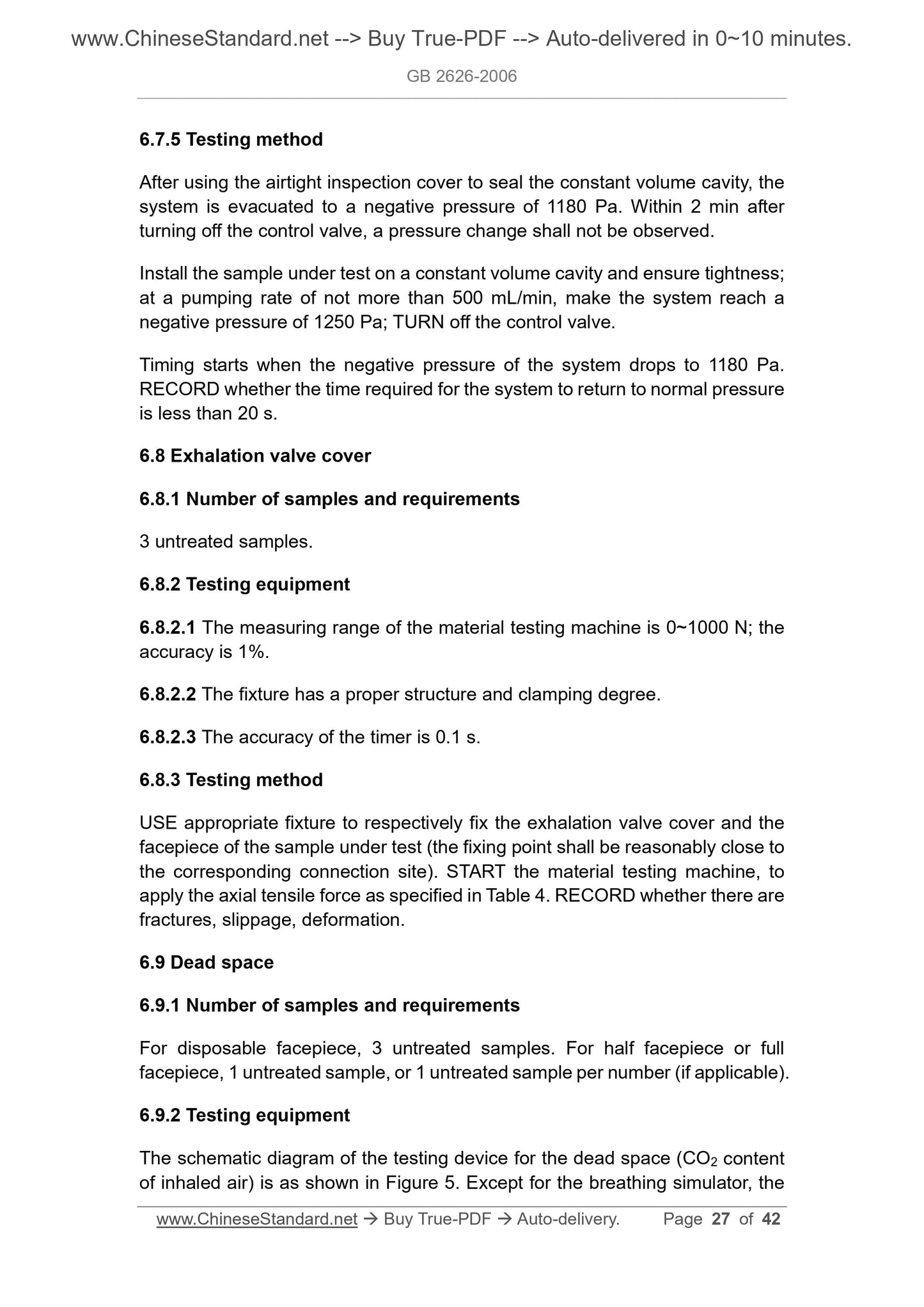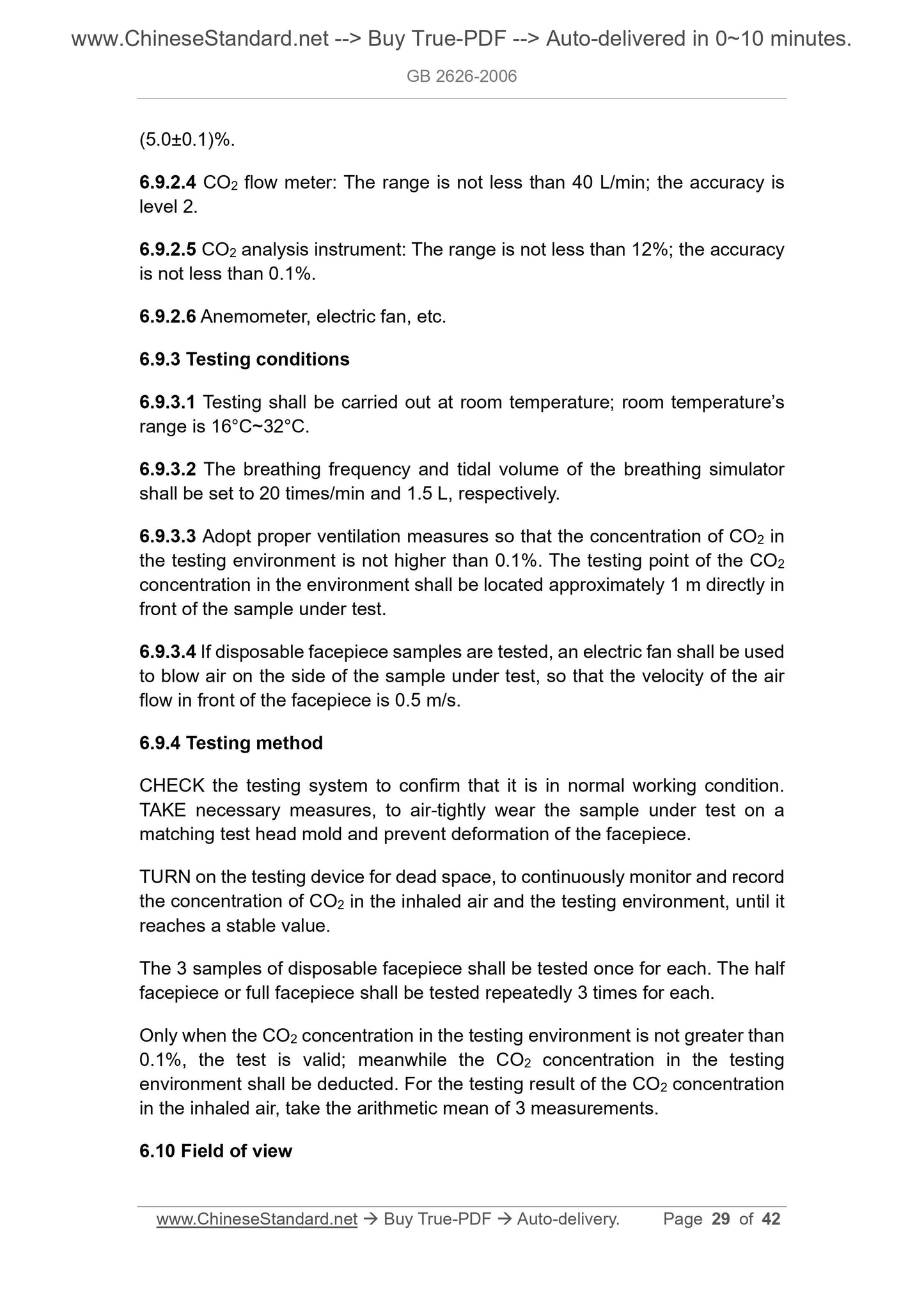1
/
of
12
PayPal, credit cards. Download editable-PDF & invoice in 1 second!
GB 2626-2006 English PDF
GB 2626-2006 English PDF
Regular price
$115.00
Regular price
Sale price
$115.00
Unit price
/
per
Shipping calculated at checkout.
Couldn't load pickup availability
GB 2626-2006: [Replaced by GB 2626-2019] Respiratory protective equipment -- Non-powered air-purifying particle respirator
Delivery: 9 seconds. Download (and Email) true-PDF + Invoice.Get Quotation: Click GB 2626-2006 (Self-service in 1-minute)
Newer / historical versions: GB 2626-2006
Preview True-PDF
Scope
This Standard specifies the technical requirements, testing methods, andidentification of non-powered air-purifying particle respirator.
This Standard applies to non-powered air-purifying respiratory protective
equipment against all kinds of particles.
This Standard does not apply to respiratory protective equipment against
harmful gases and vapors. It does not apply to the respiratory protective
equipment for hypoxic environments, underwater operations, escape, fire-
fighting.
Basic Data
| Standard ID | GB 2626-2006 (GB2626-2006) |
| Description (Translated English) | [Replaced by GB 2626-2019] Respiratory protective equipment -- Non-powered air-purifying particle respirator |
| Sector / Industry | National Standard |
| Classification of Chinese Standard | C73 |
| Classification of International Standard | 13.340.30 |
| Word Count Estimation | 27,282 |
| Date of Issue | 2006-03-27 |
| Date of Implementation | 2006-12-01 |
| Older Standard (superseded by this standard) | GB/T 2626-1992; GB/T 6223-1997; GB/T 6224.1-1986; GB/T 6224.2-1986; GB/T 6224.3-1986; GB/T 6224.4-1986 |
| Quoted Standard | GB/T 2891; GB/T 5703; GB/T 10586; GB/T 10589; GB/T 11158 |
| Regulation (derived from) | Announcement of Newly Approved National Standards No. 5, 2006 (No. 92 overall) |
| Issuing agency(ies) | General Administration of Quality Supervision, Inspection and Quarantine of the People's Republic of China, Standardization Administration of the People's Republic of China |
| Summary | This Chinese standard specifies the self-absorption filter respirators against particles technical requirements, test methods and marking. This standard applies to all types of particulate matter protective self-absorption filter respirators. |
Share
